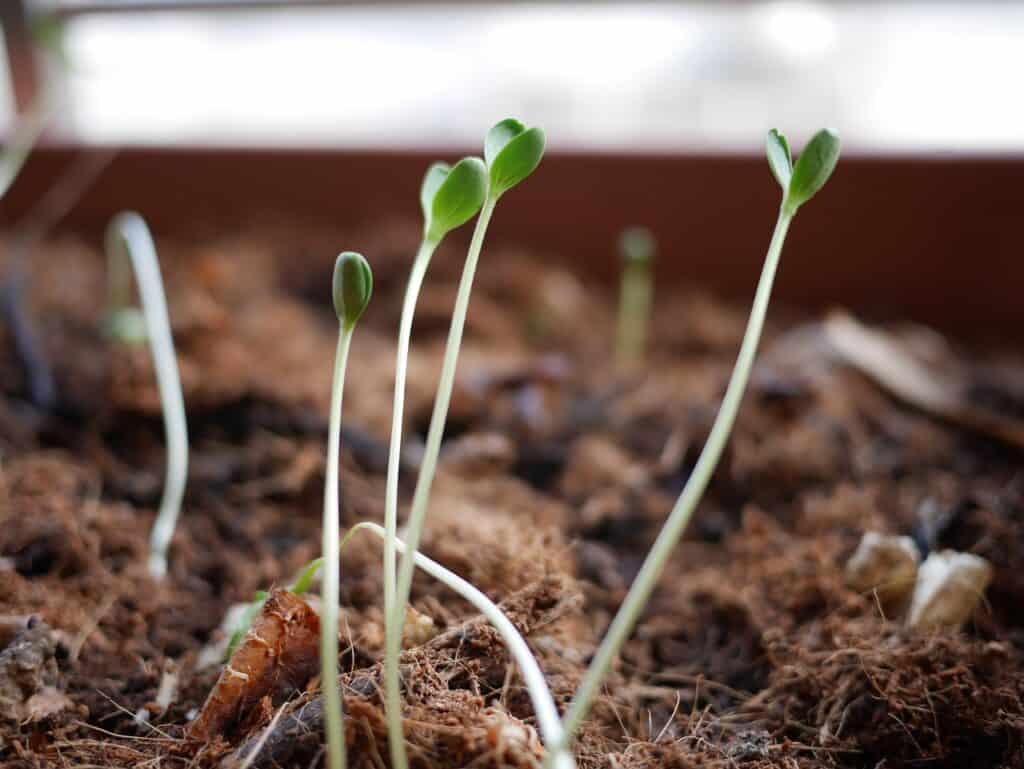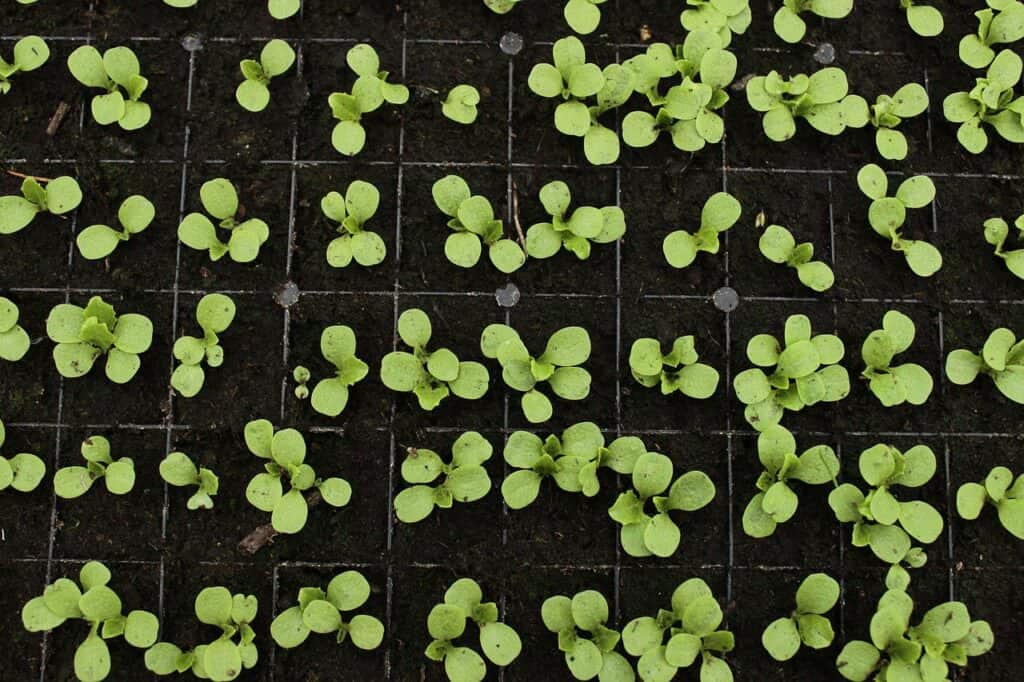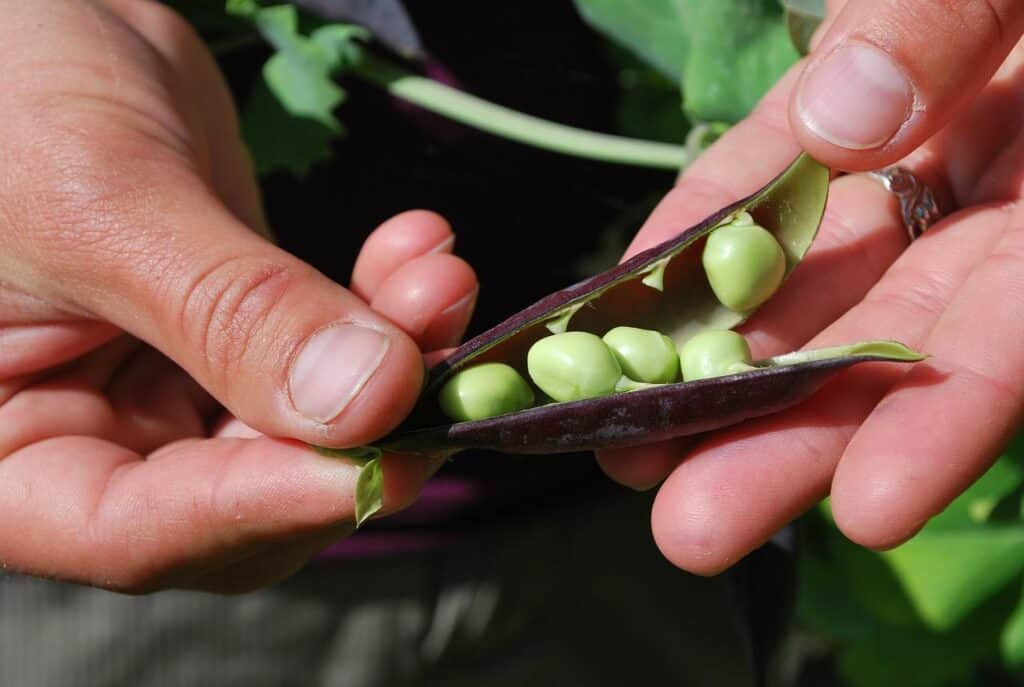In general, buying seed is more readily available than harvesting seed for your garden. However, there are pros and cons to both methods of buying and harvesting seeds.
Pros and Cons of Buying Seeds
Pros for buying seeds:
- More Variety. There are many more varieties available to purchase from a wide array of suppliers. Retailers in local areas will have a higher number of varieties that work well in your zone.
- Saves Time. Buying seeds will take you less time than harvesting seeds. This may depend on your local nursery or seed provider and the time it takes to get seed from them.
- True to type. Purchasing heirloom, or true variety types, are guaranteed to get the variety of plant you are wanting to grow. By harvesting, you may have factors of cross pollination or inbreeding that can affect the seeds, creating entirely new plants.
- Takes less space in garden. Buying seeds will take less space in your garden. When harvesting seeds, you need space to let each plant reach maturity to get seeds. For some plants, that can mean A LOT of space. Gardening on a quarter acre may limit the number of seeds you can harvest.
Cons for buying seeds:
- Costs Money. Buying seeds costs money, and therefore would be more expensive than harvesting seeds out of already mature plants. On average, seeds that are cheaper, are older seed and may not germinate.
- Availability in your area. Seed and varieties may be unavailable in your area due to local demand. For example, during the pandemic, several varieties of fruits and vegetable seeds were hard to find due to more gardens beginning.
- Viability. By using purchased seeds, you are dealing with a risk that the seeds are not viable. In a single seed packet, only 50% may germinate. Typically, when planting seeds you place two or three in a space to make sure you have at least one to germinate. With those amounts, as low as 30% of the seeds may germinate.
- Age of seed. Seeds at the store are put out every year, however, the seeds may be old depending on the time of year or even location. Ordering seeds online can also be hard to determine the age of the seed. Make sure to do your research and find a seed company that has their date information clearly posted.

Pros and Cons of Harvesting Seeds
Pros for harvesting seeds:
- No cost, free from your garden. Harvesting your own seeds does not cost you any additional money. Collecting seeds off mature plants costs nothing other than time and patience.
- Availability. By harvesting your own seeds, you are guaranteed to have the plants you want available for the next planting. When buying seeds, the varieties available at the market may not be what you planted the previous season.
- Viability. With seeds that you have harvested, there is a higher chance of germination as the seeds are much fresher than those bought in packets. (Assuming proper seed saving techniques are applied.) Some gardeners have even seen 100% germination rate from saved seeds.
- Age of seed. Saving seed from your garden and harvesting it, lets you know the exact day/time/year that you got the seed. Therefore, your seeds are guaranteed fresh. If saving your own seed, I recommend placing the date on the container that you save it in, so you know which season and year it was harvested.
Cons for harvesting seeds:
- Limited Variety. With harvesting seeds, you are limited to the variety or varieties that you planted. However, if you stick to the same plants that you like to eat or grow this may not be a con.
- Takes Time. Harvesting seeds takes time. Each plant must reach maturity and begin the seeding process. For individual plants this may take months or even years. Plants reaching maturity can look a lot of different was from bolting to flowering.
- Risk of Crossbreeding. By harvesting seeds from a mixed garden bed, you may risk inbreeding or crossbreeding between plants. For example, if tomatoes are planted close enough to each other, their offspring will take on characteristics of their neighbor. Therefore, causing them to be different than their parent plant in taste, shape, or even texture. One rule to always follow if harvesting seeds is you cannot plant same genus types together and get a true seed variety from the parent plant. The only way to avoid this is by planting hundreds of yards apart or keeping a plant in an isolated condition from start to finish.
- Takes Space. Space is a large factor in harvesting seeds. For certain plants reaching maturity can take up valuable space in a small garden. Some plants, like beets can take up to 10 feet to flower. This video by Charles Dowding shows that space is necessary when trying to harvest seeds.
- Storing Challenges. When you harvest seeds, you need methods of storing them. When seeds are improperly stored, they will rot or be unusable. Using paper envelopes, or clean glass jars are the best forms of seed storage. You want to make sure to keep your seeds in a cool dark place to avoid damaging the seeds.

What will you decide for your garden?
When making the tough choice to buy or harvest seeds for your garden, take into consideration where you live, the amount of space you have, and the amount of time you have. If you have a large space, enough time, and want to harvest your own seeds for the next planting, take measures to prepare those areas. If you have less space and more availability at your local nursery, take advantage of the different varieties you have available to you.
Several gardeners do a mixture of seed harvesting and seed buying. Oftentimes if a crop fails, saving seeds from it is a poor choice and you are better off buying new seed. Finding a local seller to your area with varieties that do well in your area is one of the best ways to start out. For seeds in my garden, I have a mixture of bought seeds and harvested seeds.

Fun Facts about Seeds:
- Some seeds are tiny as a pencil head, others are the size of a fingernail.
- Some seeds need light to germinate, some need darkness.
- Some seeds need to soak in water to germinate, others may need a “wintering” or cold temperatures.
- Seeds are often edible.
- Some seeds are carried by wind, animal, and insect.

Recent Posts
In general, to harvest your own seeds, you must choose mature, healthy plants, allow seeds to dry out, and remove the seeds when they are completely dry. However, this process will look different for...
A guide on how to store and organize seeds for your garden. Vegetables, flowers, herbs, or anything you are wanting to grow. How to Store Your Seeds Proper storage of garden seeds is essential...
